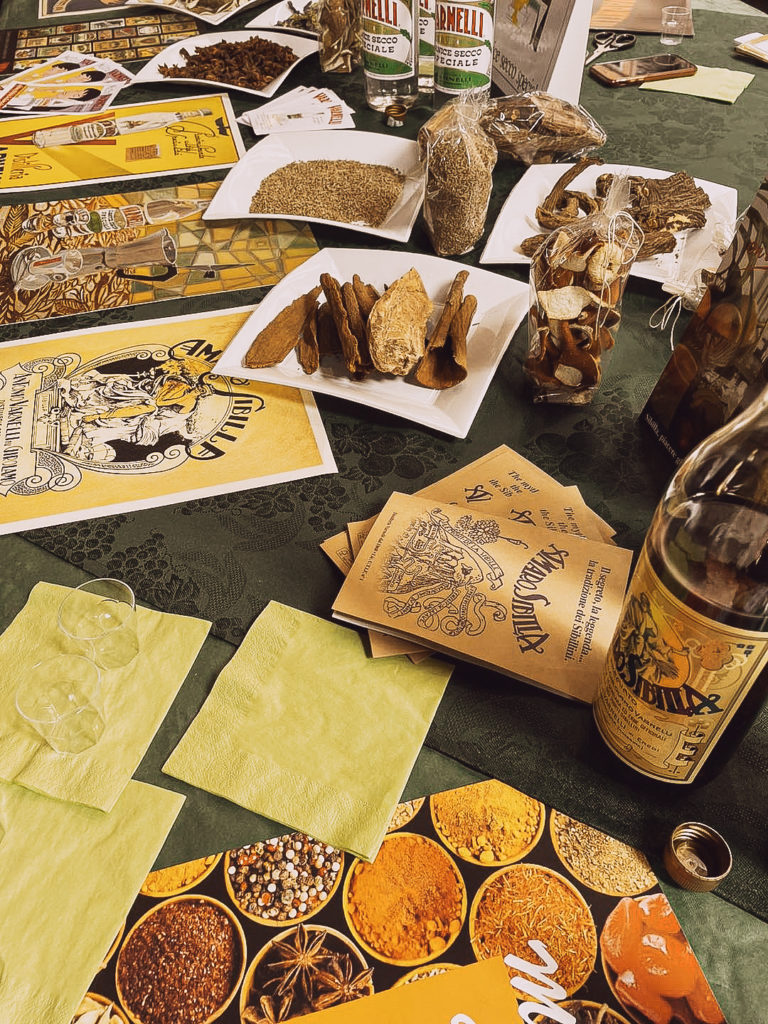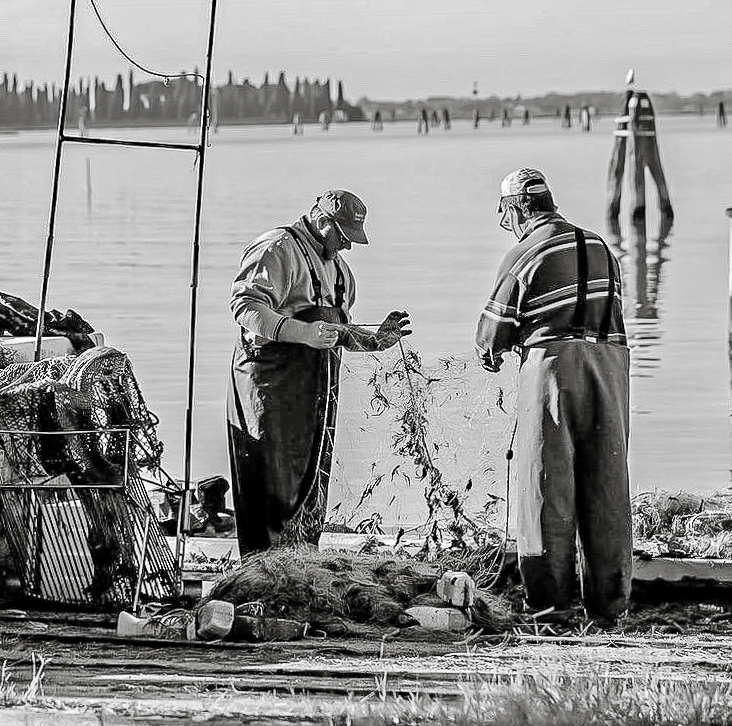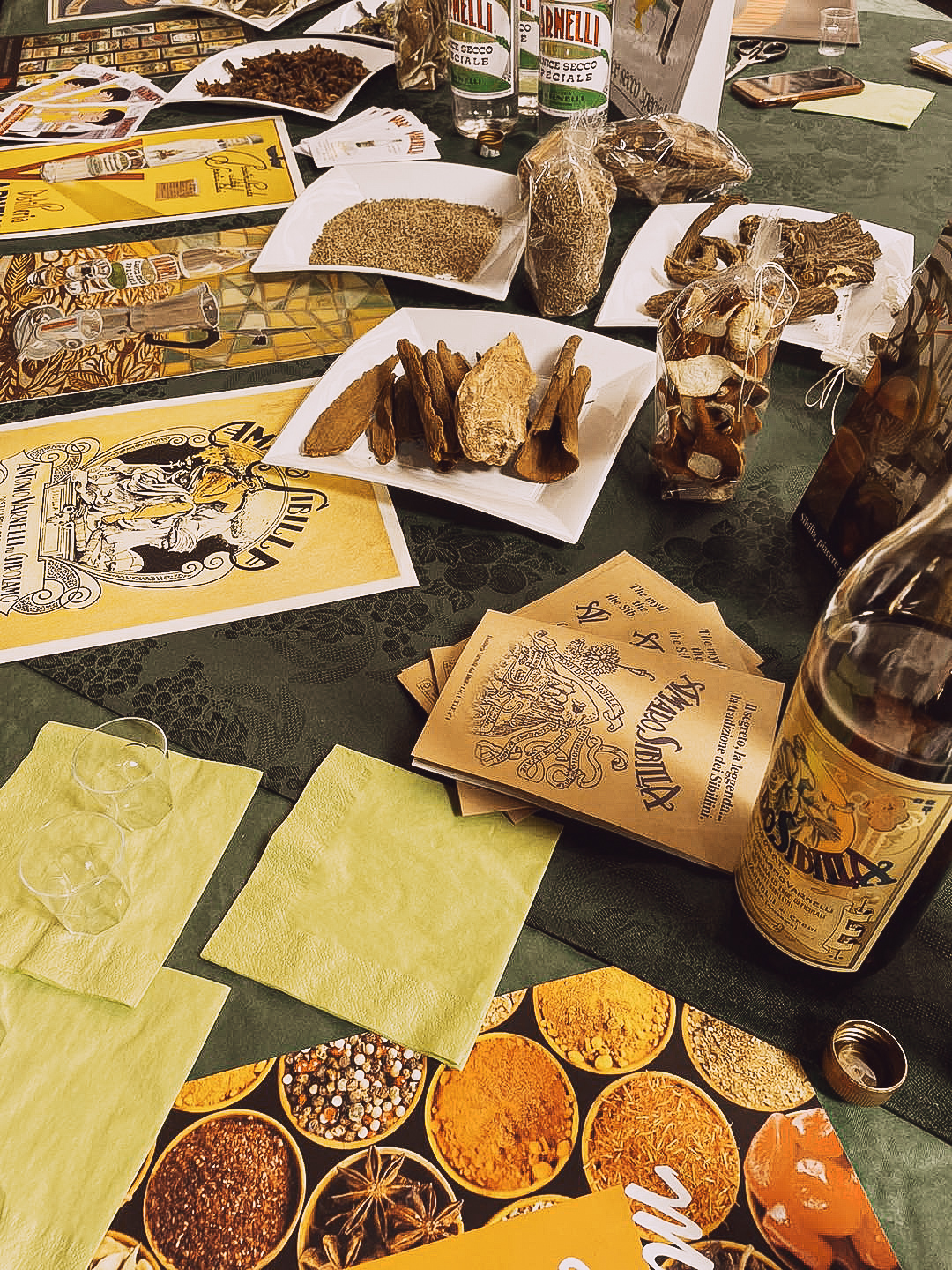That time of the year again, with the wild herb garden below the terrace coming to life: In this humid corner of the garden, the first purple-colored leaves of lovage appeared, next to tarragon greens, the yellow heads of dandelions and fresh sprouts of wild sorrel. And on Nonna’s terrace, illuminated by the mild April morning sun, a white rosa canina partly surrounded by lush fichi d’India (prickly pears, whose fruit we harvest in mid-August) is growing lush buds. And just behind, the
But these autoctone plants and herbs, which you can also find along the humid reed-studded canals criss-crossing the Lagoon islands, are by far not the only ingredients of historical and the authentic contemporaryVenetian cuisine.
To this day, it’s the spice creations which since the 12th century, made Venetian cuisine famous all over the then-known world. The first fusion cuisine, so to say.

Over the past 1600 years, Venetian cuisine developed from local garden herbs and vegetables, fish and water fowl from the Lagoon, and on the other hand, was inspired by the sophisticated spices that Venetian merchants brought back from their voyages. But Venetians not only imported these spices – they used them as ingrediens for their own mixtures called sacchetti veneziani and sold their own spice mixes all over Europe.
From the 9th century AD, Venice opened embassies and trading posts in the Mediterranean and Levantine countries, in Persia and on the ahores of the Black Sea. As Venetian merchants forged new ties and business relations, many merchants came to the Lagoon, such as Greek, Albanian, Armenian and Jewish communities. Many countries opened trading posts and embassies in Venice, like the Germans, Dutch and Ottoman Turks.
The foreign settlers in the Lagoon also brought with them their own edible and decorative plants and trees and recipes, which became an essential part of our common Venetian garden and culinary heritage.
Venice became a melting pot and bridge of tastes and scents between East and West, North and South, unique in the world, but mostly unknown to most people of our times. What a shame – there’s so much to rediscover!
If you’d like to follow the adventurous journey of how Venetians built a culinary empire which lasted for more than 1200 years, based on local herbs and blossoms and exotic spices, do choose one of our online classes dedicated to these topics: You might start with learning more about the seasonal cuisine of the Lagoon in the Laguna in Cucina – 12 Months in Venice membership. Click here to discover more!



+ show Comments
- Hide Comments
Add a comment